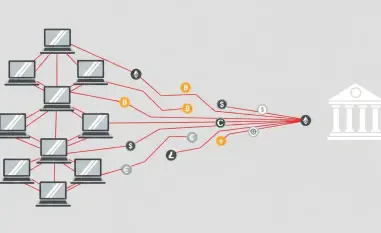In today’s interview, we’re diving into the world of cyber threats with Malik Haidar, a renowned cybersecurity expert known for his comprehensive strategies in defending against high-tech threats. Malik’s unique approach integrates analytical skills with a deep understanding of business needs, making him a valuable voice in the field of cybersecurity. Recently, a new malware called XDigo has been circulating, particularly targeting Eastern European governments. Malik is here to shed light on the complexities of this threat and the tactics involved.
Can you explain what XDigo malware is and how it’s being used in cyber attacks?
XDigo is a type of malware that’s been developed using the Go programming language, which can allow for complex and often harder-to-detect functionalities. It’s currently being used to launch cyber attacks against government entities in Eastern Europe. The malware is particularly concerning because it embodies sophisticated techniques to bypass traditional security measures and harvest sensitive information from compromised systems.
What are the specific targets of the XDigo malware in Eastern Europe?
The malware predominantly targets governmental entities, but it’s not limited to just that. We’ve seen evidence of XDigo attacks on Russian retail groups, financial institutions, insurance companies, and even postal services. These targets are carefully chosen, likely because of the valuable information they hold or their strategic importance, echoing the long-standing focus of its predecessor, XDSpy.
How do Windows shortcut (LNK) files play a role in these attacks?
LNK files are crucial to the attack delivery method. Attackers craft these files to trigger remote code execution vulnerabilities when the targets open them. The specific nature of LNK files makes them ideal because they can conceal malicious content from users inspecting them through the normal Windows interface, which is leveraged by the threat actors to execute their payloads without arousing suspicion.
What is the vulnerability in Microsoft Windows that the XDigo malware exploits?
XDigo exploits a remote code execution flaw, designated as ZDI-CAN-25373, in Microsoft Windows. The vulnerability is linked to how Windows processes specially crafted LNK files. This fault allows attackers to execute arbitrary code under the guise of mundane tasks, essentially providing them with a gateway to infiltrate a system silently.
How does the vulnerability ZDI-CAN-25373 work, and why is it significant?
This vulnerability is significant because it involves the incorrect handling or confusion in parsing LNK files. Essentially, the flaw allows crafted data within these files to execute code, appearing benign to users while having potentially dangerous effects. This can be harnessed by attackers to run commands under the user’s context without their knowledge, making it a potent threat.
Can you elaborate on the LNK parsing confusion flaw mentioned in the article?
The LNK parsing confusion flaw arises due to discrepancies between the theoretical and actual limits of string storage in LNK files. While the specification allows a larger character limit, Windows implements a much smaller one. This inconsistency means certain LNK files, which should be deemed invalid, can still execute unwanted commands in practice, often bypassing conventional security checks.
What tactics does the XDigo malware use to hide its malicious activity?
XDigo uses a sequence of obfuscation techniques, combining whitespace padding issues with LNK parsing tricks to obscure the executed command from both Windows’ UI and third-party parsers. This ability to conceal malicious actions effectively makes it harder for victims and security systems to detect the true nature of the file.
Can you describe the typical distribution method of the LNK files used in these attacks?
The typical distribution channel involves sending LNK files within ZIP archives. These archives may contain deceptive decoy PDF files to mislead users, alongside a legitimate-looking executable and a rogue DLL. This DLL is sideloaded by the executable to initiate the malware deployment process, creating a façade of normalcy.
What is the role of the ETDownloader in the malware attack chain?
ETDownloader acts as the initial stage in the malware deployment chain. It’s a downloader responsible for fetching and executing additional payloads, like the XDigo malware. By operating as an intermediary, it aids in maintaining the malware’s stealth, ensuring the malware is only executed after ensuring the system is at its most vulnerable.
What kind of data does XDigo malware aim to harvest from compromised systems?
XDigo is designed to collect a wide range of data. It can harvest files, extract clipboard content, and even take screenshots. This broad spectrum of capabilities enables it to collect valuable intelligence, particularly for espionage, providing a comprehensive view of the target’s actions and sensitive information.
How is data exfiltrated by the XDigo malware, and what methods do attackers use?
The malware uses HTTP POST requests to exfiltrate data. This method is typically chosen for its ability to blend into normal network traffic, making detection by security tools more challenging. By mimicking legitimate web traffic, XDigo can stealthily transmit stolen information back to the attacker-controlled servers.
Who are the specific victims of XDigo as identified in the article?
At least one victim has been confirmed in Minsk, with other operations targeting various Russian businesses such as retail and financial sectors. These targets indicate a strategic selection process, where the attackers prioritize organizations with potentially valuable data.
How does XDigo relate to XDSpy in terms of target focus and historical context?
XDigo continues the legacy of XDSpy, targeting similar governmental entities in Eastern Europe. XDSpy’s operations have historically aligned with espionage motives, and XDigo appears to follow this trajectory, evidencing a continuing commitment to intruding into sensitive, high-value targets.
What evasion capabilities does XDigo have against cybersecurity solutions?
XDigo is engineered with evasive measures to circumvent security detections, particularly focusing on PT Security’s Sandbox, a prominent Russian cybersecurity solution. By tailoring its intrusion techniques to bypass specific security systems, XDigo demonstrates a sophisticated understanding of the tools employed by potential victims, thereby enhancing its success rates in remaining undetected.
What is your forecast for the evolving landscape of cyber threats like XDigo?
The landscape of cyber threats will likely continue evolving rapidly, with attackers developing increasingly sophisticated methods to exploit vulnerabilities and evade detection. As technologies advance, so too will the techniques employed by cybercriminals, making collaboration and proactivity crucial for cybersecurity defenses to remain effective against emerging threats.













